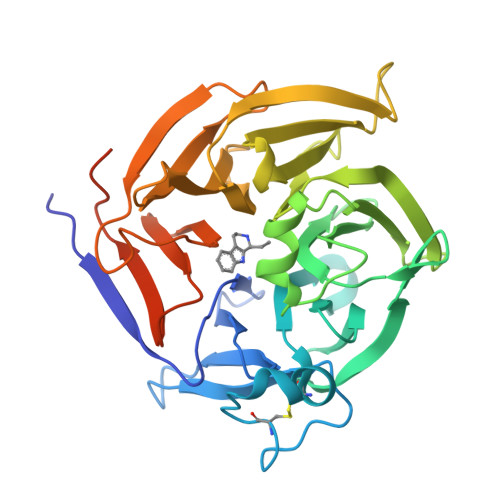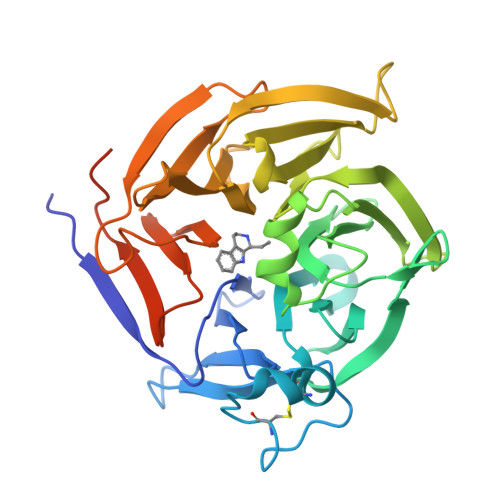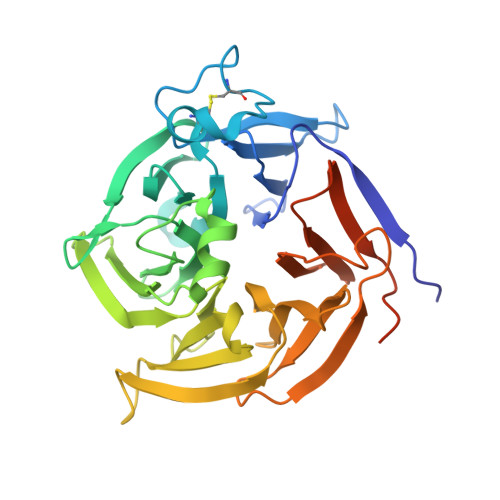Inverted Binding of Non-natural Substrates in Strictosidine Synthase Leads to a Switch of Stereochemical Outcome in Enzyme-Catalyzed Pictet-Spengler Reactions.
Eger, E., Simon, A., Sharma, M., Yang, S., Breukelaar, W.B., Grogan, G., Houk, K.N., Kroutil, W.(2020) J Am Chem Soc 142: 792-800
- PubMed: 31909617
- DOI: https://doi.org/10.1021/jacs.9b08704
- Primary Citation of Related Structures:
6S5J, 6S5M, 6S5Q, 6S5U - PubMed Abstract:
The Pictet-Spengler reaction is a valuable route to 1,2,3,4-tetrahydro-β-carboline (THBC) and isoquinoline scaffolds found in many important pharmaceuticals. Strictosidine synthase (STR) catalyzes the Pictet-Spengler condensation of tryptamine and the aldehyde secologanin to give ( S )-strictosidine as a key intermediate in indole alkaloid biosynthesis. STRs also accept short-chain aliphatic aldehydes to give enantioenriched alkaloid products with up to 99% ee STRs are thus valuable asymmetric organocatalysts for applications in organic synthesis. The STR catalysis of reactions of small aldehydes gives an unexpected switch in stereopreference, leading to formation of the ( R )-products. Here we report a rationale for the formation of the ( R )-configured products by the STR enzyme from Ophiorrhiza pumila ( Op STR) using a combination of X-ray crystallography, mutational, and molecular dynamics (MD) studies. We discovered that short-chain aldehydes bind in an inverted fashion compared to secologanin leading to the inverted stereopreference for the observed ( R )-product in those cases. The study demonstrates that the same catalyst can have two different productive binding modes for one substrate but give different absolute configuration of the products by binding the aldehyde substrate differently. These results will guide future engineering of STRs and related enzymes for biocatalytic applications.
Organizational Affiliation:
Department of Chemistry, Organic and Bioorganic Chemistry , University of Graz , Heinrichstrasse 28 , 8010 Graz , Austria.

















